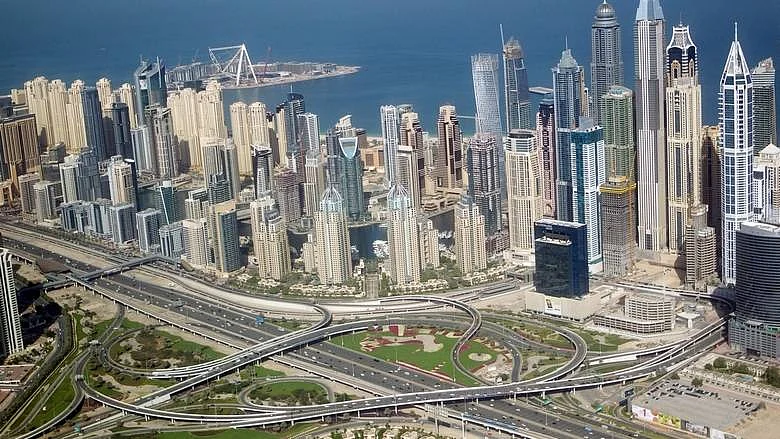
Dubai Real Estate To Stabilise After 4 Years Of Soaring Prices Amid New Supply
Dubai's property market, which has been on a remarkable rally for four years, is approaching a decisive turning point with predicted market rebalancing in the offing.
Global ratings agencies Moody's and Fitch both expect a market adjustment in the next two years as an unprecedented wave of housing supply in Dubai meets a slowing pace of demand growth. Their cues come after residential values surged nearly 60 per cent between 2022 and early 2025, fuelled by foreign capital inflows, rising affluence, and record immigration supported by long-term visa reforms.
Recommended For You Dubai: How play therapy helps children express emotions, heal after abuseMoody's forecasts more than 150,000 new homes will be delivered between 2025 and 2027, equal to about 20 per cent of Dubai's existing housing stock . Fitch's analysts estimate an even sharper influx, with nearly 250,000 units scheduled for release over the same period, and as many as 120,000 set to hand over in 2026 alone. This represents a 16 per cent increase in supply against the expected population growth of only 5 per cent. Both agencies say this imbalance will inevitably cool the market. However, they stress the adjustment is likely to be orderly, not disruptive, with Fitch capping its projection of price declines at around 15 per cent.
Stay up to date with the latest news. Follow KT on WhatsApp Channels.
Demand fundamentals remain strong, underpinned by Dubai's expanding population , which crossed four million in 2025 after rising six per cent in the previous year. Smaller household sizes, a growing cohort of expatriate professionals, and a surge in high-net-worth residents - now over 80,000 millionaires - are sustaining appetite for property. In the first quarter of 2025 alone, more than 590 homes worth above Dh20 million changed hands, marking one of the most active periods for the luxury segment in two years. The divergence between prime and mid-market is likely to deepen as supply builds: luxury villas and townhouses in Dubai are expected to hold value better, while mid-market apartments face more pronounced downward pressure as new units flood the market.
Signs of slowing are already emerging. Apartment and villa prices still rose at double-digit rates in 2024, but rental growth decelerated sharply this year, dropping to 8.5 per cent in May from over 21 per cent a year earlier. US-style interest rate pressures are also weighing on mortgage affordability, shifting more buyers into cautious mode.
What differentiates the current cycle from previous downturns is the resilience of developers and the safeguards built into the system. Market leaders like Emaar now boast order backlogs of Dh129 billion, up from Dh25 billion just five years ago. Average leverage among top developers has dropped from nearly five times equity to just 1.4 times, while combined profits of the six largest players reached Dh46 billion in 2024, compared with Dh12 billion in 2020. Escrow rules, stricter launch requirements, and expanded buyer protections across Dubai, Abu Dhabi and now Sharjah ensure that project completions remain far more reliable than in earlier cycles.
Fitch notes that banks, too, have reduced their exposure. Corporate real estate lending balances dropped by Dh66 billion between 2022 and 2024, cutting the sector's share of total domestic loans to 14 per cent, with mortgages adding another eight per cent. This de-risking reduces the chances of systemic financial stress even if values soften.
The adjustment phase could bring notable benefits for residents and end-users. Buyers will enjoy greater choice and bargaining power as supply peaks, while tenants may see rent stabilisation, especially in mid-market apartments. For investors, however, the landscape is becoming more selective, with premium segments offering stability but thinner yields, and oversupplied zones demanding more cautious entry.
Real estate consultants assert that ultimately, the market is unlikely to collapse under the weight of new supply, but the years of relentless upward price momentum are set to give way to a period of rebalancing. They believe that the challenge will be in absorbing the glut of new units due by 2026 without undermining investor confidence, while the opportunity lies in building a more stable and transparent real estate ecosystem that can sustain both residents and global investors over the long term.

Legal Disclaimer:
MENAFN provides the
information “as is” without warranty of any kind. We do not accept
any responsibility or liability for the accuracy, content, images,
videos, licenses, completeness, legality, or reliability of the information
contained in this article. If you have any complaints or copyright
issues related to this article, kindly contact the provider above.


















Comments
No comment